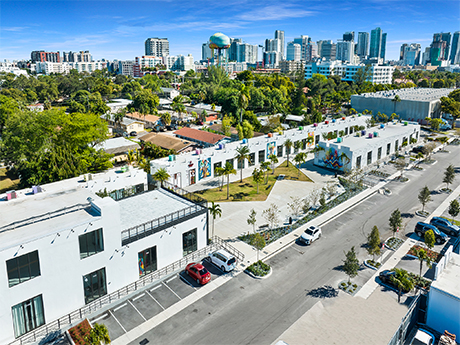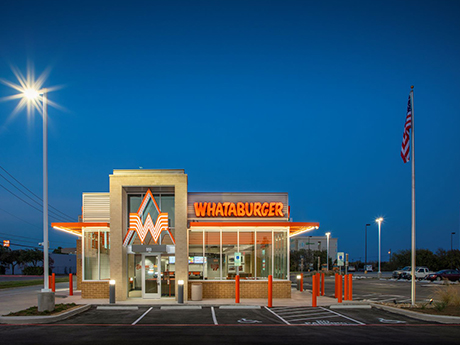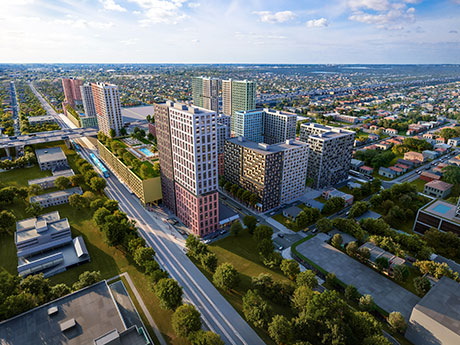When people think of Memphis, they often picture its musical legacy, its storied riverfront and its role as a logistics powerhouse. But fewer realize that Memphis is also quietly becoming one of the Southeast’s most dynamic retail markets. Despite headwinds that have impacted large-format retailers nationally, Memphis continues to attract new-to-market brands, redevelop aging assets and create spaces that resonate with today’s consumers. Economic foundations Memphis is riding a wave of transformational investment across multiple sectors. Ford Motor Co.’s $5.6 billion Blue Oval City, where the company’s all-electric truck and battery plant will be built, is already reshaping the regional economy. Google’s announcement of a 1,178-acre, $10 billion data center and office campus in nearby West Memphis in Arkansas adds another layer of momentum, as does the creation of the world’s largest supercomputer by xAI. Coupled with St. Jude’s $10 billion expansion, these projects underscore the region’s growth trajectory and long-term employment base. In retail, the past year brought a temporary pause in net absorption, with approximately 317,000 square feet coming back to the market — primarily due to national big-box closures like Macy’s, Joann Fabrics and Big Lots. Yet these macro shifts don’t tell the whole story. By the …
Southeast Market Reports
When asked what makes Florida appealing from a retail perspective, Steven Miskew, CEO of Southeast Centers, put it succinctly: “The good macro-economic drivers are here: population growth, lack of supply and low vacancy, all in a pro-business environment,” he said. As Miskew asserts, Florida’s population continues to swell as approximately 1,755 people move into the state daily, according to 2023 data from online self-storage platform StorageCafe. Additionally, U-Haul has ranked Florida as a top four growth state in its annual growth index — which analyzes the destinations for one-way moves across its fleet — every year since 2015. Seven Florida cities ranked in U-Haul’s top 25 growth metros in 2024. Florida’s growing population underpins the success of its retail sector as more rooftops directly correlates to more demand for corresponding services, including grocery, food-and-beverage, health and wellness and soft goods. Phil Kirkpatrick, business recruitment and property development at the City of Clearwater’s economic development and housing department, says that the Tampa Bay-area city is seeing very strong retail occupancy levels. “Vacancy is quite low as of the end of 2024, sitting at 5.4 percent,” says Kirkpatrick, acknowledging that the rate exceeds the vacancy rate of the overall Tampa Bay metro …
The Memphis industrial market stands at a pivotal juncture in mid-2025, navigating temporary headwinds while maintaining the fundamental strengths that have established it as one of the Southeast’s premier logistics hubs. Despite recent challenges from global trade uncertainties and tariff negotiations impacting project timelines, the market’s long-term outlook remains positive with a foundation built on unparalleled logistics infrastructure and strategic advantages. Global logistics advantage Memphis stands as the ultimate global logistics hub, with unrivaled multimodal infrastructure creating competitive advantages few markets can match. The “FedEx effect” remains one of Memphis’ most significant economic drivers. This powerful multiplier — named for the company’s massive impact on the regional economy — has transformed Memphis into a critical node in global supply chains. With its World Hub at Memphis International Airport, FedEx connects businesses to hundreds of countries across multiple continents, processing millions of shipments while employing thousands across the region. Recent initiatives, including Network 2.0, One FedEx and the new Automated Sorting Facility at the World Hub, represent strategic investments in efficiency and integration that are likely to boost the Memphis industrial real estate market. Additionally, Memphis International Airport ranks among the busiest cargo airports in the Western Hemisphere and the second …
Orlando is one of the country’s most active residential markets today — a modern-day “boomtown” experiencing rapid growth on multiple fronts. Economic expansion, population gains and infrastructure investments are fueling job creation and housing demand. Multifamily developers have responded with an unprecedented range of new affordable, middle-market and luxury housing options. Young professionals, retirees, urbanites, suburbanites, digital nomads and long-term residents can each find something to suit their lifestyles and budgets thanks to a diverse mix of residential settings and price points across the Central Florida region. Economic drivers Orlando has attracted more people and created more jobs than any other U.S. metro over the past year. In 2024, Orlando led the nation in job growth, adding more than 37,500 jobs, according to the Florida Department of Commerce. Major projects, such as Universal Studios’ Epic Universe, Walt Disney World’s expansion, the Lake Nona Town Center build-out and Westcourt (the Orlando Magic’s Sports and Entertainment District) are expected to bring another 60,900 jobs by 2027. The growing healthcare, education and tech sectors are bringing greater balance to the economy; more than 80 percent of the local workforce is employed outside of hospitality and leisure, according to the Orlando Economic Partnership. Orlando …
The momentum in Charlotte’s office market continues into 2025, showcasing a strong first quarter marked by positive net absorption and a surge in multi-market tenant prospects. We are currently seeing three times as many expansions as downsizing among tenants, indicating a psychological shift among decision-makers across various industries. Despite some large vacancies affecting the overall market rate, the narrative on the ground in Charlotte is one of optimism and urgency. A few factors contribute to this trend, including companies are increasingly bringing employees back to the office, and those that overcorrected their space needs post-pandemic are reassessing their strategies. Particularly interesting is the demand for Class A office space in Charlotte, a thriving Sun Belt market. The most sought-after buildings in prime locations are nearly full, leading to reduced concessions and rising rents. This stands in stark contrast to reports of distressed assets negatively impacting modern office investments. Furthermore, the number of quality subleases are limited, and new construction is expected to come to a halt soon, particularly as remaining spaces in 110 East and Legacy Union are leased, most likely by year-end. If last year is any indication of a fundamental positive shift in the office sector, we can …
The Charlotte industrial market continues to display resilience in 2025, navigating a national slowdown with more stability than a lot of other markets. While economic headwinds and record supply volumes have created challenges nationally, Charlotte’s fundamentals remain anchored by consistent tenant demand, especially for Class A space under 200,000 square feet. As vacancy stabilizes and rent spreads narrow between asset classes, a clear flight to quality trend is reshaping how tenants prioritize space and make leasing decisions throughout the region. In first-quarter 2025, Charlotte recorded just over 1 million square feet of net absorption, maintaining positive momentum while absorbing the wave of speculative deliveries over the past several years. Fifty-six percent of all leases signed in the first quarter were for Class A space — the highest percentage recorded for Class A product since 2016, according to research from Avison Young. This stands out in light of the significant volume of new construction deliveries that have come on line vacant in recent years. With the rent premium between Class A and B product narrowing, tenants are increasingly seizing the opportunity to relocate into newer, more efficient facilities. The tenant-in-the-market (TIM) pipeline tells a compelling story. More than 12 million square …
Charlotte’s multifamily market is turning a corner after a once-in-a-generation supply wave that introduced 19,000 new apartments into the metro area in 2024. While rent growth will be muted for most of the year as the market continues to absorb the new supply, the dynamic will shift toward the end of 2025, putting landlords back in the driver’s seat. Record-low new apartment starts this year, combined with steady population growth and an economic climate that favors renting over owning will boost leasing activity in the second half of the year — and may even produce rent growth for the first time since 2022. Fundamentals in play Like many other Sun Belt cities, Charlotte has been on a joyride of growth stemming from in-migration since the COVID-19 pandemic. The city’s population expanded 2.2 percent between 2023 and 2024, making it one of the fastest-growing markets in the Southeast. Another 56,000 new residents are expected to move in by the end of the year, according to research from Berkadia. The long-term forecast for population growth is even rosier: the Charlotte Regional Business Alliance forecasts the metro population will surge by 50 percent over the next 25 years, driving demand for housing. Tariff …
Charlotte: “The Queen City” named after Queen Charlotte, wife of George III, has been on a tear post-COVID with new and expanding retail concepts. Vacancy rates have hovered under 4 percent the last few years, with little signs of changing , according to research from Institutional Property Advisors (IPA). Much of that vacancy has occurred in less desirable markets, or in junior and big-box bankruptcies (JOANN, Big Lots, Party City, etc.) that are being snatched up as quickly as they become vacant. Tenants are desperate and clamoring for new locations to keep up with the strong residential growth (24,000+ new residents in the city limits in 2024 and 46,000 in the CSA), making charlotte the 14th largest city in the country, and 19th-largest CSA in terms of overall population. This factor combined with unemployment hovering in the low 4 percent range, plus household income growth has called for desperate measures to ID new space or weakness in the market. We as local experts have seen a slight uptick, over the past 12 months, in some “shadow inventory.” This occurring when an existing retailer or restaurant might be struggling with sales, or in partial default, and the landlord has the opportunity …
This year marks the centennial of several Miami municipalities, including Coral Gables and Hialeah, placing Miami-Dade County in a unique position: looking back on a rich history as a sunseeker’s playground, while charging full speed into a future where it is also a tech hub and financial powerhouse, with some dubbing the city as “Wall Street South.” From the first land rush in the 1920s to the post-pandemic migration surge a century later, Miami’s real estate story includes fascinating characters, iconic architecture, multiple booms and busts and not one but two great railroad eras — all contributing to the city’s allure as a place to live, and where institutional-quality capital is increasingly eager to invest. Population, job momentum Miami has enjoyed one of the strongest multifamily markets in the country for roughly the past decade. A blend of population growth and job creation forms the backbone of Miami’s resilient rental market. Miami-Dade County added over 64,000 net new residents as of July 2024, driven almost entirely by international newcomers. According to the U.S. Census Bureau, the county saw 123,835 international arrivals, offsetting the 67,000 locals who left. Behind that growth is an unprecedented business boom. Lured by Florida’s business-friendly environment …
Over the past five years, the national office market has faced its fair share of challenges: hybrid work reshaping demand, a surge in sublease spaces and rents stagnating in many cities. But Miami’s office market? It’s been a standout performer, and it’s soaring, not just holding its ground. From the onset of the COVID-19 pandemic, Miami began to separate itself from other major metros. While cities across the country struggled to coax tenants back to the office, Miami became a hotspot for companies eager to expand. What began as an influx of interest from financial firms, law practices and tech companies quickly evolved into a significant shift. These weren’t temporary moves — these were long-term leases and major investments. Since 2020, Miami-Dade has absorbed nearly 3 million square feet of office space. Unlike other cities where growth has fluctuated, Miami’s demand has been steady. Even as leasing slowed down nationally in 2023, Miami managed to hold strong. By 2024, leasing activity picked up again, and the first quarter of 2025 saw impressive absorption numbers. A major factor in Miami’s success is its disciplined approach to office development. While other markets overbuilt, leading to high vacancy rates, Miami’s new supply has …











